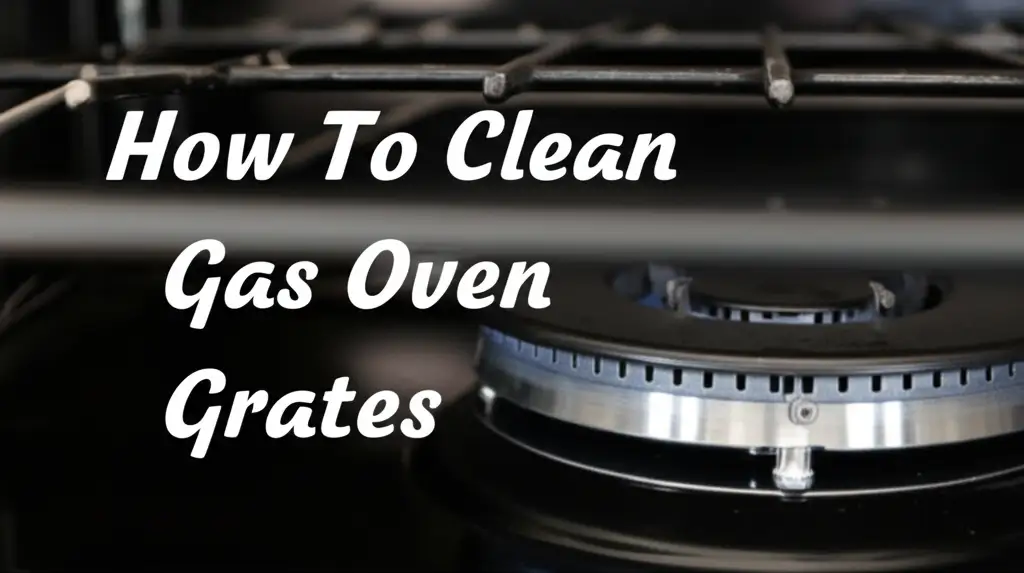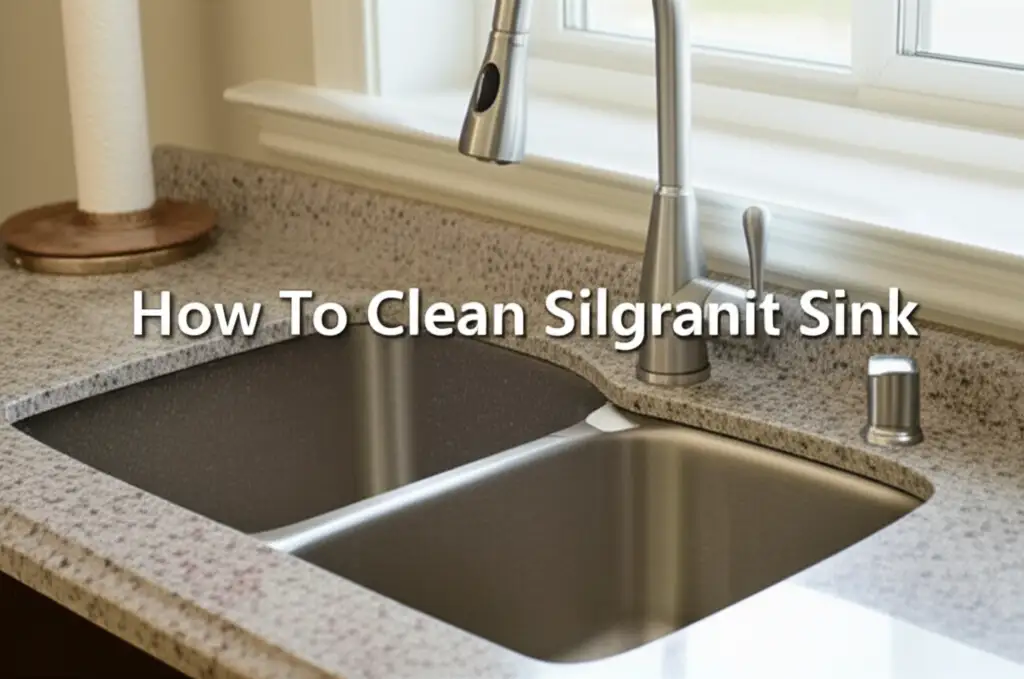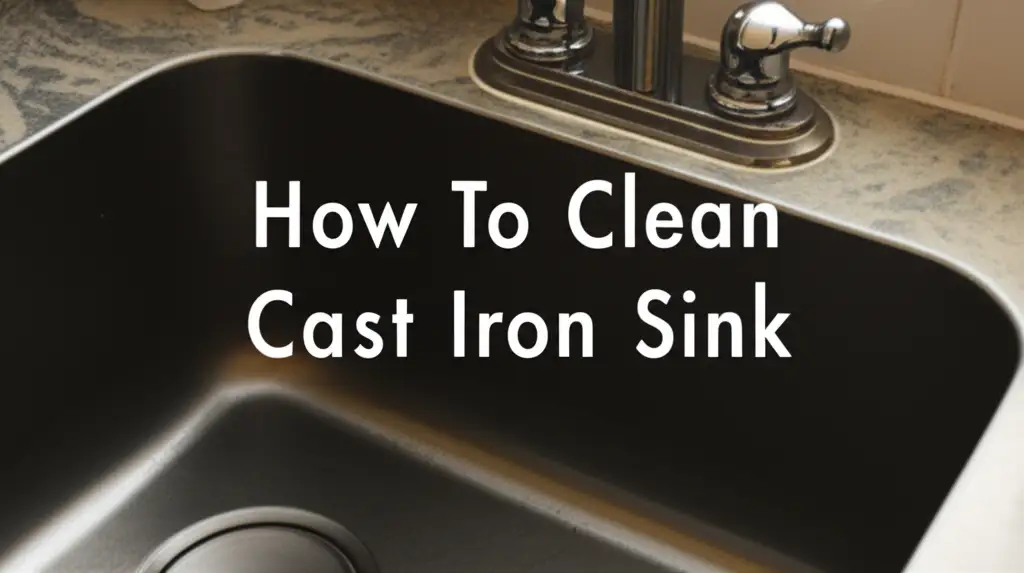· Kitchen Maintenance · 18 min read
How To Clean Farmhouse Sink

Transform Your Kitchen: How To Clean Farmhouse Sink Effectively
A farmhouse sink brings charm and character to any kitchen. Its deep basin and classic design make it a focal point. However, constant use means it collects grime, stains, and scuff marks. Keeping your farmhouse sink spotless is important. A clean sink brightens your whole kitchen. It also keeps your sink hygienic. Learning how to clean farmhouse sink properly helps maintain its beauty for years. This guide shows you simple ways to make your sink shine again. We will cover daily care, deep cleaning methods, and stain removal tricks. You will find tips for various farmhouse sink materials. We also provide advice for long-term sink protection.
Takeaway:
- Know your farmhouse sink material to choose the right cleaning method.
- Establish a daily cleaning routine to prevent tough stains and grime buildup.
- Use gentle, non-abrasive cleaners and tools for regular maintenance.
- Address stubborn stains like metal marks, food stains, and hard water spots with specific treatments.
- Protect your sink from damage with proper care and preventative measures.
To clean a farmhouse sink, first identify its material. Most are fireclay or porcelain. Use warm water, mild dish soap, and a soft sponge for daily cleaning. For stubborn stains, baking soda and hydrogen peroxide, or a gentle abrasive cleaner, often work. Rinse thoroughly after cleaning to remove all residue.
Understanding Your Farmhouse Sink Material
Your farmhouse sink’s material greatly impacts how you clean it. Most farmhouse sinks are made from fireclay or porcelain. These materials look similar but have different properties. Knowing your sink’s specific material helps you choose the correct cleaning products. It also prevents accidental damage during cleaning. We will explore the common types and their care needs.
Fireclay Sink Care
Fireclay sinks are very durable. Manufacturers make them from ceramic clay fired at high temperatures. This process creates a smooth, dense, non-porous surface. Fireclay resists chips, scratches, and stains well. It is often heavier and more robust than porcelain. This material can handle daily kitchen tasks with ease.
For fireclay, avoid harsh chemicals like bleach or abrasive scrubbers. These can dull the finish over time. Mild dish soap and warm water are best for daily cleaning. You can use baking soda for a gentle scrub on tougher spots. Always rinse the sink thoroughly after cleaning. This prevents any residue buildup.
Porcelain Sink Care
Porcelain sinks feature a ceramic base with a porcelain enamel coating. This coating gives the sink its glossy, smooth finish. Porcelain is strong, but the enamel can be prone to chipping or scratching if not cared for. Over time, the porous nature of some porcelain can make it susceptible to staining. Cleaning a white ceramic sink often involves similar steps.
You must be gentle with porcelain sinks. Use non-abrasive cleaners and soft cloths or sponges. Avoid steel wool or abrasive powders. They can scratch the delicate enamel surface. For stains, a mixture of baking soda and hydrogen peroxide works well. Always test any new cleaning product in an inconspicuous area first. This prevents damage to your beautiful sink.
Cast Iron Farmhouse Sinks
Some farmhouse sinks are cast iron with an enamel finish. These sinks are incredibly heavy and durable. The enamel coating on cast iron is similar to porcelain. This means you should clean them with similar care. Avoid anything that can chip or scratch the enamel. Rust can be a problem if the enamel chips, exposing the iron. Always address scratches quickly. Cleaning a cast iron sink requires specific attention to its enamel.
Use mild dish soap and warm water for daily care. For tough stains, baking soda and a non-abrasive cleaner work well. Never use acidic cleaners on chipped areas. This can cause rust. Always dry your cast iron sink after use. This prevents water spots and potential rust issues.
Daily Cleaning Habits for a Sparkling Sink
Establishing a daily cleaning routine is vital for maintaining your farmhouse sink. Regular care prevents grime from building up. It also stops stains from setting in. Daily habits keep your sink looking fresh and new. This simple routine takes only a few minutes. It saves you effort on deep cleaning later. I make sure to do these steps every day.
Gentle Daily Wipe-Down
After each use, quickly wipe down your farmhouse sink. Use a soft cloth or sponge with warm water. A small amount of mild dish soap helps clean away food residue. This simple step stops food particles from drying onto the surface. It also prevents light stains. Pay attention to the corners and the apron front. These areas often collect splashes and drips.
Rinse the sink thoroughly with clean water. Then, dry the surface completely. Use a clean, dry cloth. Drying the sink prevents water spots. It also stops hard water buildup. This is especially important in areas with hard water. A dry sink looks much cleaner and resists new stains better. This quick wipe-down forms the foundation of proper sink care.
Preventing Scratches and Stains
Preventing damage is just as important as cleaning. Scratches and stains can make your beautiful farmhouse sink look old. They also create rough spots where grime can stick. I always try to be careful with my sink.
Avoid dropping heavy pots or pans into the sink. This can cause chips or cracks, especially in porcelain or enamel sinks. Use a sink grid or a silicone mat at the bottom of your sink. These accessories protect the surface from impacts. They also allow water to drain freely. Never slide heavy or sharp objects across the sink surface. Always lift them instead.
For preventing stains, rinse the sink immediately after contact with staining foods. Coffee, tea, wine, and highly pigmented foods can leave marks. Do not leave metal items like cast iron pans or steel cans in the sink for long periods. They can cause rust marks. Regular rinsing and quick clean-ups make a big difference. This proactive approach keeps your sink looking its best.
Deep Cleaning Your Farmhouse Sink: Step-by-Step Guide
Sometimes, your daily cleaning routine is not enough. Your farmhouse sink might need a deeper clean to remove stubborn dirt. This happens with heavy use or if you miss daily wipe-downs. A deep clean restores your sink’s original luster. It targets set-in stains and accumulated grime. This process is simple but very effective.
Gathering Your Supplies
Before you start, gather all necessary cleaning supplies. Having everything ready makes the process smoother. You probably have most of these items already.
Here is a list of what you will need:
- Mild dish soap: For general cleaning.
- Baking soda: A gentle abrasive and stain remover.
- Hydrogen peroxide or white vinegar: Effective for tough stains and sanitizing. (Do not mix bleach with vinegar or hydrogen peroxide).
- Soft cloths or sponges: Non-abrasive options.
- Non-scratch scrub brush: For tougher spots.
- Rubber gloves: To protect your hands.
- Warm water: For rinsing and cleaning.
- Optional: Bar Keepers Friend (powder or liquid) or a specialized sink cleaner for ceramic/porcelain.
Ensure all your tools are clean. This prevents transferring dirt to your sink. I find that using good quality tools makes cleaning easier.
The Cleaning Process
Follow these steps for a thorough deep clean. This method works well for most farmhouse sink materials. Always read the cleaning product instructions first.
- Clear the Sink: Remove all dishes, drain stoppers, and sink grids from the sink. This gives you full access to the surface. Rinse the sink with warm water to remove loose food particles.
- Apply Baking Soda: Sprinkle a generous amount of baking soda over the entire surface of the sink. You can make a paste with a little water for extra scrubbing power. Focus on stained areas. Baking soda is gentle yet effective at lifting grime.
- Add Hydrogen Peroxide or Vinegar: For tougher stains, pour a small amount of hydrogen peroxide or white vinegar over the baking soda. This creates a fizzing action. This reaction helps lift and break down stains. Let it sit for 10-15 minutes. Cleaning a sink drain with vinegar can also help with odors.
- Scrub Gently: Using a soft sponge or non-scratch brush, gently scrub the entire sink surface. Work in small circular motions. Pay extra attention to any visible stains or scuff marks. For apron front sinks, do not forget the front panel.
- Rinse Thoroughly: Rinse the sink completely with warm water. Make sure to wash away all baking soda and cleaner residue. Leftover residue can attract more dirt. It can also leave a dull film.
- Dry and Polish: Wipe the sink dry with a clean, soft cloth. This removes water spots and helps the sink shine. You can use a microfiber cloth for a streak-free finish. Some people like to buff the sink with a dry cloth for extra shine.
Repeat this deep cleaning process as needed. I usually do it once a week. This keeps my farmhouse sink looking new.
Tackling Stubborn Stains and Marks
Farmhouse sinks can face a variety of stubborn marks. These marks often do not come off with daily cleaning. Metal scuffs, food stains, and hard water spots are common issues. Each type of stain needs a specific approach. Do not panic if you see these marks. Most stains are removable with the right product and method.
Metal Marks and Scuffs
Metal utensils, pots, and pans can leave grey or black marks. These are not scratches. They are tiny metal deposits rubbed onto the sink’s surface. They are common on porcelain and fireclay sinks. I see them often after heavy cooking.
To remove metal marks:
- Method 1 (Baking Soda Paste): Make a thick paste with baking soda and a little water. Apply it directly to the metal marks. Let it sit for a few minutes. Then, scrub gently with a soft sponge or cloth. The mild abrasive action of baking soda helps lift the marks. Rinse well afterwards.
- Method 2 (Bar Keepers Friend): For very stubborn marks, Bar Keepers Friend is highly effective. It comes in powder or liquid form. Sprinkle the powder on a damp sponge or apply the liquid. Gently rub the marks until they disappear. This product contains oxalic acid, which dissolves metal deposits. Always follow the product instructions. Wear gloves and rinse very well. This is my go-to for tough scuffs.
Food Stains (Coffee, Tea, Wine)
Highly pigmented foods and drinks can leave unsightly stains. Coffee, tea, and red wine are common culprits. If left to dry, these can set into the sink’s surface.
To remove food stains:
- Hydrogen Peroxide: Pour hydrogen peroxide directly onto the stain. Let it sit for about 15-30 minutes. Hydrogen peroxide is a powerful bleaching agent that is safe for most sink materials. It breaks down organic stains. Scrub gently and rinse thoroughly.
- Bleach (Use with caution): For very tough stains on white porcelain or fireclay, a diluted bleach solution can work. Mix 1 part bleach with 4 parts water. Apply it to the stain with a paper towel. Let it sit for no more than 10-15 minutes. Never use bleach with vinegar or any acid-based cleaner. This creates dangerous fumes. Rinse the sink very well multiple times after using bleach. I only use bleach as a last resort.
Hard Water Spots
Hard water contains minerals like calcium and magnesium. These minerals leave white, chalky residue when water dries. Hard water spots can make your sink look dull. They are especially visible on darker sinks or when the sink is not dried regularly. Cleaning hard water stains from stainless steel sink involves similar principles.
To remove hard water spots:
- White Vinegar: White vinegar is acidic and dissolves mineral deposits. Dampen a cloth with undiluted white vinegar. Lay the cloth over the hard water spots. Let it sit for 30 minutes to an hour. For severe buildup, you can let it sit longer.
- Scrub and Rinse: After soaking, scrub the spots with a non-scratch sponge. The mineral deposits should loosen easily. Rinse the sink thoroughly with clean water. Dry the sink immediately to prevent new water spots. Repeat if necessary.
Rust Stains
Rust stains often come from metal objects left in the sink. Old cans, cast iron cookware, or rusty tools can cause them. Rust can be particularly stubborn on white sinks.
To remove rust stains:
- Lemon Juice and Salt: This is a natural rust remover. Squeeze fresh lemon juice onto the rust stain. Sprinkle a layer of salt over the lemon juice. The salt acts as a mild abrasive, and the lemon juice’s acidity dissolves the rust. Let it sit for a few hours or overnight.
- Scrub and Rinse: Scrub the area with a soft brush or sponge. The rust should lift away. Rinse the sink thoroughly.
- Bar Keepers Friend: As mentioned for metal marks, Bar Keepers Friend is also excellent for rust stains. Apply as directed and scrub gently. Its oxalic acid compound targets rust effectively. Always rinse well.
Always rinse your sink completely after using any cleaning product. This removes all chemicals and prevents new stains. Drying the sink after cleaning also helps prevent future stain buildup.
Maintaining Your Farmhouse Sink’s Luster
Keeping your farmhouse sink shiny and protected requires ongoing maintenance. Beyond cleaning, specific practices can extend its life and preserve its beautiful finish. These tips focus on prevention and protection. They help your sink resist future damage and stains. I always incorporate these steps into my routine.
Avoiding Harsh Chemicals
Many common household cleaners are too strong for farmhouse sinks. Cleaners containing harsh acids, strong alkalis, or abrasive particles can damage the surface. They can etch the finish of porcelain or fireclay. They can also dull the shine over time. Bleach should be used sparingly and only with proper dilution.
Always check the cleaner’s label. Look for “non-abrasive” or “safe for porcelain/ceramic” labels. Avoid cleaners meant for drains or toilets. These are often too aggressive. Stick to mild dish soap, baking soda, vinegar, or hydrogen peroxide. These are gentle yet effective. If you use a stronger product for a specific stain, follow up with a thorough rinse. This washes away any residue that could cause long-term damage.
Using Sink Grids and Mats
Sink grids and mats are excellent protective accessories. They sit at the bottom of your sink. They create a barrier between dishes, pots, and the sink surface. This prevents scratches, chips, and metal marks. I highly recommend them for any farmhouse sink.
- Protection: Grids lift dishes slightly off the sink bottom. This stops heavy items from hitting the surface directly. Mats provide a cushion for dropped items.
- Drainage: Many grids have openings that allow water and food particles to drain easily. This prevents standing water.
- Material: Choose grids made from stainless steel with rubber feet. Silicone mats are also a good option. Avoid plain metal grids that can scratch the sink themselves. Make sure the feet of the grid are coated or rubberized.
- Cleaning: Remember to clean the sink grid or mat regularly. Food can get trapped under them. This can lead to mold or odors. Remove them weekly and clean both the grid and the sink underneath.
Polishing and Protecting the Surface
After cleaning, you can take extra steps to enhance your sink’s luster. Some products help repel water and stains. This makes future cleaning easier.
- Mineral Oil: For an easy shine, apply a thin coat of mineral oil to your dry sink. Pour a small amount on a soft cloth. Wipe it evenly over the entire surface. Buff it gently until it shines. Mineral oil helps water bead up. It also reduces the visibility of minor scratches. It is safe for food contact.
- Specialized Sealants: Some manufacturers offer sealants for porcelain or fireclay sinks. These products create a protective barrier. They repel water, oil, and stains. Apply them according to the product instructions. They often last for several months.
- Regular Drying: The simplest form of protection is regular drying. After every use, wipe your sink dry. This prevents hard water spots from forming. It also stops soap scum buildup. A dry sink looks cleaner and stays cleaner longer. This simple habit makes a big difference.
Addressing Specific Farmhouse Sink Types and Issues
While fireclay and porcelain are common, farmhouse sinks come in other materials too. Each material needs specific cleaning methods. Also, some issues go beyond surface stains. Knowing how to handle these different types and problems ensures your sink’s longevity.
Stainless Steel Farmhouse Sinks
Although less traditional, stainless steel farmhouse sinks exist. These are durable and resistant to heat. They can show water spots and fingerprints easily. Cleaning a stainless steel sink involves specific methods to maintain its shine.
To clean:
- Use mild dish soap and warm water daily.
- For streaks and water spots, use a microfiber cloth. Wipe in the direction of the grain.
- White vinegar is excellent for hard water spots. Apply, let sit, then wipe.
- Avoid abrasive scrubbers or steel wool. They can scratch the surface.
- Do not use cleaners with bleach. They can cause pitting or discoloration.
Copper Farmhouse Sinks
Copper farmhouse sinks are beautiful and develop a unique patina over time. This patina is part of their appeal. Harsh cleaners can strip this patina. Cleaning a copper sink requires extreme care.
To clean:
- Use mild soap and warm water with a soft cloth for daily cleaning.
- Avoid acidic foods sitting in the sink for too long. They can lighten the patina.
- Never use abrasive cleaners, bleach, or harsh chemicals.
- For deep cleaning, specialized copper cleaners are available. These restore the shine if desired.
- Dry the sink after each use to prevent water spots.
Addressing Foul Odors
Sometimes, your farmhouse sink smells bad even after cleaning. This often comes from the drain. Food particles can get trapped in the drain or garbage disposal. They break down and create unpleasant smells.
To remove odors:
- Baking Soda and Vinegar: Pour 1/2 cup of baking soda down the drain. Follow with 1 cup of white vinegar. Let it fizz for 15-30 minutes. The reaction breaks down grease and food. Rinse with hot water. This method is effective for cleaning a sink drain with vinegar.
- Ice and Salt (for disposals): If you have a garbage disposal, grind a cup of ice cubes with a handful of rock salt. This helps scrape away grime from the blades. Follow with citrus peels for a fresh scent.
- Regular Flushing: Run hot water down the drain for a few minutes daily. This helps flush away small food bits.
Minor Scratches and Dullness
Over time, even with care, minor scratches or dullness can appear. Especially on porcelain or enamel finishes.
To improve appearance:
- Polishing Compound: For very fine scratches, a specialized porcelain polishing compound might help. Apply it with a soft cloth and buff gently. Always follow product instructions carefully. Test in an inconspicuous area first.
- Mineral Oil: As mentioned before, mineral oil can hide very minor scratches. It gives the surface a deeper luster.
- Professional Help: For deep chips or cracks, contact a professional. They might be able to repair or re-glaze the sink.
Regular, gentle care is the best defense against these issues. Being proactive keeps your farmhouse sink looking beautiful for many years.
Frequently Asked Questions
How often should I clean my farmhouse sink?
You should wipe down your farmhouse sink daily with mild soap and water. This prevents food buildup and water spots. Perform a deep clean weekly or bi-weekly. This addresses any accumulating grime or minor stains. Consistent care saves effort in the long run.
Can I use bleach on my farmhouse sink?
You can use diluted bleach on white fireclay or porcelain sinks for tough stains. Mix 1 part bleach with 4 parts water. Do not let it sit for more than 10-15 minutes. Never mix bleach with vinegar or other acidic cleaners. Always rinse the sink very thoroughly multiple times after using bleach to remove all residue.
What causes grey marks on my white farmhouse sink?
Grey marks often come from metal utensils, pots, or pans. These marks are tiny metal particles transferred onto the sink’s surface. They are not deep scratches. Baking soda paste or Bar Keepers Friend can effectively remove these marks. Gently scrub the area until they lift away.
How do I prevent hard water stains on my farmhouse sink?
Prevent hard water stains by drying your sink thoroughly after each use. Use a soft, clean cloth to wipe away all water. For areas with very hard water, consider applying a thin layer of mineral oil periodically. This helps water bead and run off the surface, reducing mineral buildup.
Are sink grids necessary for a farmhouse sink?
Sink grids are highly recommended for farmhouse sinks. They protect the sink’s bottom from scratches, chips, and impact damage from dishes and pots. They also allow water to drain better, preventing standing water and potential stains. Choose a grid with rubberized feet to avoid scratching the sink.
What should I do if my farmhouse sink gets chipped?
For minor chips on a porcelain or enamel farmhouse sink, you can use a porcelain repair kit. These kits contain a touch-up glaze that matches your sink’s color. For larger chips or cracks, it is best to consult a professional. They can offer more durable repair options or re-glaze the affected area.
Keeping Your Farmhouse Sink Spotless
A farmhouse sink adds immense beauty and functionality to your kitchen. Keeping it clean is not difficult. It just requires consistent care and the right approach. We have covered everything from daily cleaning habits to tackling the most stubborn stains. Knowing your sink’s material, like fireclay or porcelain, is your first step. It helps you choose the correct cleaning agents. Remember, gentle is always better.
A routine of daily wiping and weekly deep cleaning will keep your sink shining. Use simple household products like baking soda, vinegar, and mild dish soap. Avoid harsh chemicals and abrasive tools. They can damage your sink’s delicate surface over time. Preventing scratches with sink grids and drying the sink after each use are vital protective measures. Your farmhouse sink can stay a beautiful, hygienic centerpiece for many years with these steps. Start these practices today. Enjoy a sparkling clean kitchen.
- farmhouse sink cleaning
- sink care
- kitchen cleaning
- porcelain sink
- fireclay sink




